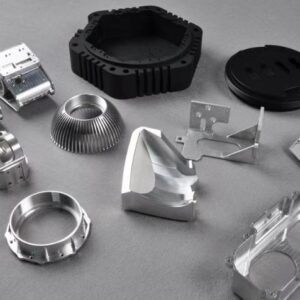In recent years, 3D printing services have evolved from a niche prototyping tool into a transformative technology across multiple industries. Professional 3D printing enables businesses to innovate faster, reduce costs, and bring complex designs to life with precision and efficiency. Below are the top 10 industries leveraging 3D printing services to gain a competitive edge.
1. Aerospace and Defense
The aerospace sector relies on 3D printing to create lightweight, durable components that can withstand extreme conditions. From engine parts to interior cabin fixtures, 3D printing helps reduce material waste and improve fuel efficiency.
2. Automotive

Automakers use professional 3D printing to accelerate prototyping, streamline design iterations, and produce end-use parts. Custom tools, jigs, and fixtures are also printed to reduce assembly time and costs.
3. Healthcare and Medical Devices
The medical industry has seen groundbreaking applications of 3D printing—from patient-specific implants and prosthetics to surgical guides and anatomical models. Customization and precision are key benefits for both doctors and patients.
4. Dental
Dentistry is one of the fastest adopters of 3D printing. High-precision printers create crowns, bridges, aligners, and dentures with unmatched accuracy, improving patient outcomes and reducing turnaround time.
5. Consumer Goods and Electronics
Companies producing consumer products leverage 3D printing for rapid prototyping, design testing, and even limited-run production. Electronics manufacturers benefit from creating complex housings, custom enclosures, and heat-resistant components.
6. Architecture and Construction
3D printing is revolutionizing construction by enabling the fabrication of building components, scale models, and even full-scale structures. Architects use it to visualize concepts, while construction firms reduce costs through on-site printing.
7. Education and Research
Universities and research centers use 3D printing to teach design, engineering, and medical practices. It allows students and researchers to experiment with real-world applications and develop innovative solutions.
8. Fashion and Jewelry
Designers are embracing 3D printing to create intricate jewelry, accessories, and custom fashion pieces. The technology allows for unique designs that are otherwise impossible to craft using traditional methods.
9. Manufacturing and Industrial Production
Industrial sectors use 3D printing for rapid tooling, spare parts, and low-volume production runs. It enhances flexibility, shortens supply chains, and reduces dependence on large inventories.
10. Energy and Oil & Gas
The energy sector benefits from 3D printing in creating specialized parts for turbines, drilling equipment, and renewable energy systems. It supports faster repairs and on-demand production in remote locations.
Professional 3D printing services are no longer limited to prototypes—they are reshaping how industries innovate, manufacture, and deliver solutions. As technology continues to advance, the adoption of 3D printing across these industries will only accelerate, driving efficiency, sustainability, and design freedom.
